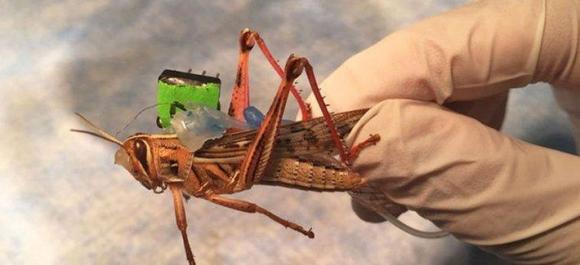The most versatile and robust machines are still those produced by nature through evolution. To date, man has not yet equaled the olfactory abilities of dogs, but has discovered a way to modify the neurological system of insects to control them remotely.
The Naval Research of the US Navy has assigned a check from 750 thousand dollars to the University of Washington in St. Louis, to surgically alter the locusts so as to perceive at a distance possible explosive devices, detecting chemical changes in an environment. The ability to observe dangerous and inaccessible contexts for traditional vehicles with a different tactical approach, could revolutionize the way of acquiring information on battlefields.
According to researchers at the University of Washington in St. Louis, the chemistry of detection of these insects is very well developed, managing to perceive a new odor in milliseconds. The sense of smell is the ability to perceive different types of chemicals in the air.
Despite advances in artificial technology, the olfactory abilities of animals are still far from being matched by man. The relative simple neurological system of locusts allows you to modify them surgically making them able to transmit sensory data. The progress achieved by the University of Washington in St. Louis in the field of biological UAVs is impressive. The transformation into biological UAVs takes just a few minutes, while the locusts are ready for the 24 flight hours after the operation without any restrictions. To direct the insects, the researchers have created a sort of membrane, capable of converting the laser light into heat, which is placed on the wings of the grasshoppers. A small electrode implanted in the brain of the locust allows the operator to understand what the insect antenna is picking up. A small device capable of transmitting the collected data is implanted on the back of the locust. The first prototype will be tested within a year. The Navy will receive the first operational biological locust-based UAV within two years.
The idea of a cyber-insect it's not new anyway. The proposal for the creation of a biological UAV, equipped with a suite of sensors, goes back to the 2007. The challenge of DARPA was won by the University of California, which in the 2009 managed to remotely control, via six electrodes installed in the brain and nervous system, a scarab beetle (chosen for its capacity to carry up to three grams of weight) .
The US military has invested millions of dollars in MAVs or Micro Air Vehicles, a program for the design of small and ultralight aircraft with a length of less than fifteen centimeters, a maximum weight of 20 grams, with the ability to perform missions for the acquisition of information for intelligence purposes in open and closed places. Studies on MAVs began in the 2005, but to date are still considered to be at an embryonic stage due to the limitations of current technology and the very strict parameters imposed by the American defense such as the wingspan set at a maximum of 7,5 centimeters, a navigation system automated anti-collision (designed, that is, to fly inside buildings), a powerful communication system in addition to on-board cameras. Another problem is the power supply. The current battery technology, in fact, is not advanced enough to offer the right energy support for missions that could last even hours. To date, in fact, the batteries that would provide enough energy to operate the MAVs would be too large.
From the "failure" of the MAVs, the idea of DARPA was born to exploit the chemical sensors of insects to detect traces of explosives in buildings or in the remote caves of a hostile country. After years of mapping insect biology, the researchers began to surgically modify their nervous system, connecting it to a tiny wireless receiving station that would translate the operator's radio pulses into complex movements. Scientists can already control the flight of butterflies for example, but it is clear that such cyborg insects they could be used in a wide variety of uses, from spying to search and rescue missions.
Insects are platforms ready made, they also consume 100 times less energy than robots of the same size and do not need a preloaded code to perform a certain complex movement.












